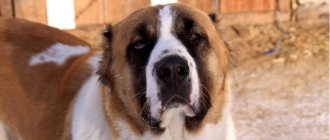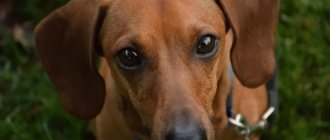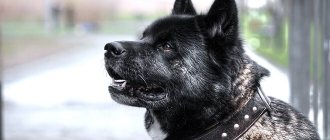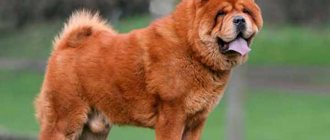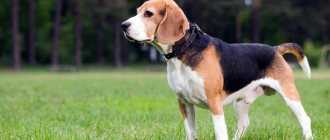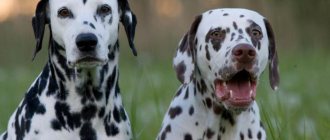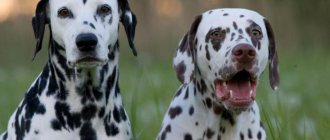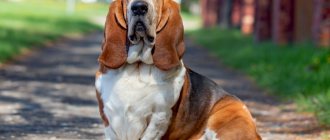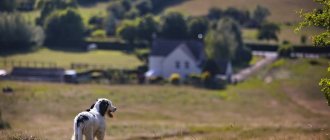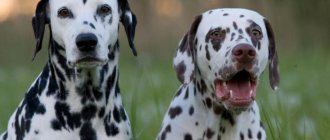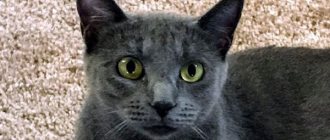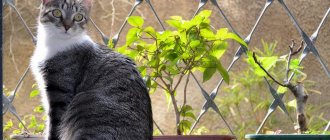Russia is a country of snow-capped mountains and colorful cities. However, not only the beauty of the country deserves special mention, but also some of the best dog breeds created here in the modern world.
Russian dog breeds are, as a rule, large working dogs created for guarding and hunting. Russian breeders also bred some adorable lapdogs, which were mainly created as companions for the aristocracy.
Keep reading to learn about the best dog breeds from Russia, some of which may surprise you!
Siberian Husky
Let's start our list with the most famous Russian dog breed - the Siberian Husky. The breed has Chukotka roots . The Chukchi began using them as sled dogs at least 4,000 years ago, although they gained recognition much later, in 1908, when they were imported to Alaska during the Gold Rush. From here the fame of the breed spread throughout the world.
You've probably heard the story of Balto and Togo, the huskies who saved the Alaskan town of Nome from a deadly diphtheria outbreak in 1925 when more than 20 sled dogs transported antitoxin along a 1,085-kilometer-long icy and snowy road in just 6 days. The reason this mission was so successful was due to the fearless courage and tenacity of the Siberian Huskies, as well as their ability to work together. You might be surprised to learn that they are still used for sledding in rural areas of Alaska and Greenland!
Siberian Huskies can also make great pets if you can offer them plenty of exercise and mental stimulation.
Samoyed
These ever-smiling dogs weren't specifically bred to be big teddy bears. In fact, they were created for herding reindeer, transporting sleighs and hunting - all in the harshest conditions of the Siberian terrain.
Even at temperatures of -50 degrees Celsius, the large fluffy coat of Samoyeds perfectly warms them and protects them from piercing winds.
Despite their cold-resistant genes, Samoyeds are now very popular family dogs that love to cuddle with their owners like no other. But it is worth remembering that this Russian dog is a working type, so you must be prepared to offer the Samoyed plenty of exercise.
How to choose a puppy
Choosing a pet must be approached responsibly. To do everything right, it is recommended to adhere to the following tips:
- Decide on the breed. It could be a hunter, an ornamental pet, or a companion.
- Accommodations. If you plan to take a pet into an apartment, then you should not choose a very large individual that will find it difficult to live in such conditions.
- Pet's character. Quiet and inactive people are not suitable for overly active pets. It is necessary to take into account the rhythm of your own life.
- You should look for a purebred Russian dog in specialized nurseries. It is also important to check all documents and vaccinations.
- Examine the puppy. He should be healthy, moderately active, clean, without a sickly, lethargic appearance.
The described popular breeds were bred in Russia and the USSR. Most of them are quite large individuals and are more suitable for private houses and plots than apartments. Regardless of the choice of breed, it is recommended to immediately begin socializing the puppy and take its care and training seriously.
East European Shepherd
The East European Shepherd is often considered the Russian version of the German Shepherd, and this is not surprising, since the similarities between the two are obvious. Developed in 1930 for the military, this Russian dog breed was created out of a need for a versatile dog that could cope with the freezing Russian climate.
Thanks to their Russian roots, East European Shepherds are extremely brave, making them excellent guard dogs even today. They will need a lot of physical and mental exercise as they are highly intelligent and have large reserves of energy . If you don't give them enough stress, it can lead to destructive behavior.
History of Russian cynology
Cynology in Russia originated on the basis of the national sport - hound hunting. In the development of science, the high level of technical skills of dog breeders was of great importance, since many of them were engaged in horse breeding. The real rise of cynology occurred at the end of the 19th century, when monographs about dogs, their training and education began to be published. Along with the hunting direction, service dog breeding gradually developed. Today, the largest cynological organization in Russia is the Russian Cynological Federation, which has been a partner of the International Federation since 1995, and since 2003 a full member.
RKF has been an active member of the International Cynological Federation since 2003
About 30 breeds are considered Russian, a third of which are already recognized internationally. The main feature is endurance and good health, since most were bred in the harsh northern climate.
Black Russian Terrier
The name of this Russian dog breed is a little misleading as it is not a terrier at all. In fact, Black Russian Terriers are part of the working group of dogs, and they are quite large, reaching 76.5 cm in height. These powerful dogs were developed in an attempt to create a "super dog" for the army , fast and tough, with a coat thick enough to withstand the coldest Russian winters.
To create the Black Russian Terrier, breeds such as Newfoundland, Airedale, Rottweiler and Giant Schnauzer were used.
In today's world, Black Russian Terriers are more likely to be seen lounging on the couch or lazily wandering around the apartment. But keep in mind that their protective instincts are deeply ingrained, so early socialization is important. Black Russian Terriers are incredibly intelligent and love to work, so they are relatively easy to train! Just be sure to offer them plenty of entertainment.
Caucasian Shepherd Dog
The Caucasian Shepherd is a mastiff native to the Caucasus Mountains. These huge Russian dogs originated at least 2,500 years ago and were bred to work on farms where they performed a variety of tasks, but their main role was to protect livestock from fearsome predators such as wolves.
This Russian dog breed tends to choose one person to form a strong bond with, and it will not tolerate being separated from them for too long. So if you have the time and space for a Caucasian Shepherd, you will get a gentle and kind companion who will be completely devoted to you throughout his life.
Moscow watchdog
This breed is considered one of the best guard dogs. They are hardy, smart, scary-looking and loyal to their owner. After the Great Patriotic War, almost all types of large sentry species became extinct in Russia.
Therefore, the Krasnaya Zvezda nursery began active work on breeding four-legged guards. To create the Moscow watchdog, scientists began crossing the Caucasian Shepherd, St. Bernard and Russian piebald hound.
Russian greyhound
Elegant and majestic – these are the two words most often used to describe the Russian Borzoi, and it’s easy to see why. The greyhound boasts long legs, silky hair, a streamlined muzzle and a height almost comparable to the greyhound. This is one of the fastest dog breeds in the entire world with a top speed of 64.5 km/h .
Many years ago, greyhounds won the hearts of the Russian aristocracy; they were used to hunt wolves and foxes, and were fast enough to catch hares. Up until 1936, the breed was known as the "Russian Wolfhound", when its name was changed to "borzoi", which is an archaic Russian adjective meaning "fast"!
Greyhounds are very good-natured and affectionate and can form close bonds with one family member, making them not particularly suitable for large families.
One thing to mention about this Russian dog is that it loves to run. As they are a hound breed, feedback cannot always be relied upon, so greyhounds can only run freely in a large fenced garden.
Karelian Bear Dog
Originally bred as companions and helpers to Russian and Finnish peasants, the Karelian Bear Dog has both hunting and guarding instincts. This variety of Spitz was used for hunting large game. Historically, the Karelian Bear Dog came in red, tan and gray, and black and white colors, but today only black and white colors are preferred for breeding. It is said that all Karelian bear dogs living today are descended from the toughest dogs that managed to survive fierce battles and incredibly harsh conditions.
The breed is still very common in Finland and Russia, but is not so popular in other countries of the world. Karelian Bear Dogs have very keen senses and high intelligence , making them very good at obedience tests, and their strength and endurance help them win sled dog races.
What varieties exist, features
Dog breeds bred in the countries of the former USSR are assigned to Russia. Among these are the Caucasians, who were bred in Urartu. However, the Russian Canine Association decided to classify these breeds as domestic.
At the moment, hunting, service and ornamental animals are found on the territory of the Russian Federation. All have a large number of distinctive characteristics. Most of the breeds were bred by Soviet breeders. Modern Russian specialists cannot yet boast of achievements.
Russian toy terrier
This adorable little Russian dog traces its roots back to the 18th century, where it was considered an "accessory" among the upper classes. At the time, it was considered very fashionable to attend events such as the opera house or ballet with a Russian Toy Terrier tucked under your arm.
This breed is now quite rare due to the 1917 revolution, which stopped the breeding of companion dogs.
However, Russian Toy Terriers make ideal lap dogs and are always happy to cuddle with their people. They form very strong bonds with their family and usually stay away from strangers unless they happen to be on their territory. Despite their small size, Russian Toy Terriers make very good guard dogs !
Based on materials from: www.purina.co.uk
Content
Russian hounds traditionally live on the street, in warm and well-equipped booths or enclosures; it is better if the dog additionally has its own canopy. The dog's enclosure should have a wooden floor and a flooring made of sawdust or hay.
The walls must be insulated. Many breeders agree that keeping a dog in a warm and heated room negatively affects the health and activity of the dog.
Considering the activity of these dogs, it is better to immediately provide them with a place in the yard where they can frolic to their heart's content. In addition, this breed is very light-loving. The dog requires constant exposure to daylight sunlight. Otherwise, she will develop rickets and muscle weakness.
At the same time, it is important to accustom them to the idea that other pets are not their prey or toys.
Other care details:
- Periodic washing or brushing the coat with a damp brush about once every quarter
- Regular flea and tick treatment
- Treatment for worms
- Vaccinations against various diseases transmitted by ticks are required.
The dog's diet should be balanced and contain equal proportions of proteins, fats and carbohydrates. This animal is quite unpretentious in food. The constant activity and attention of the owner is more important to him.
